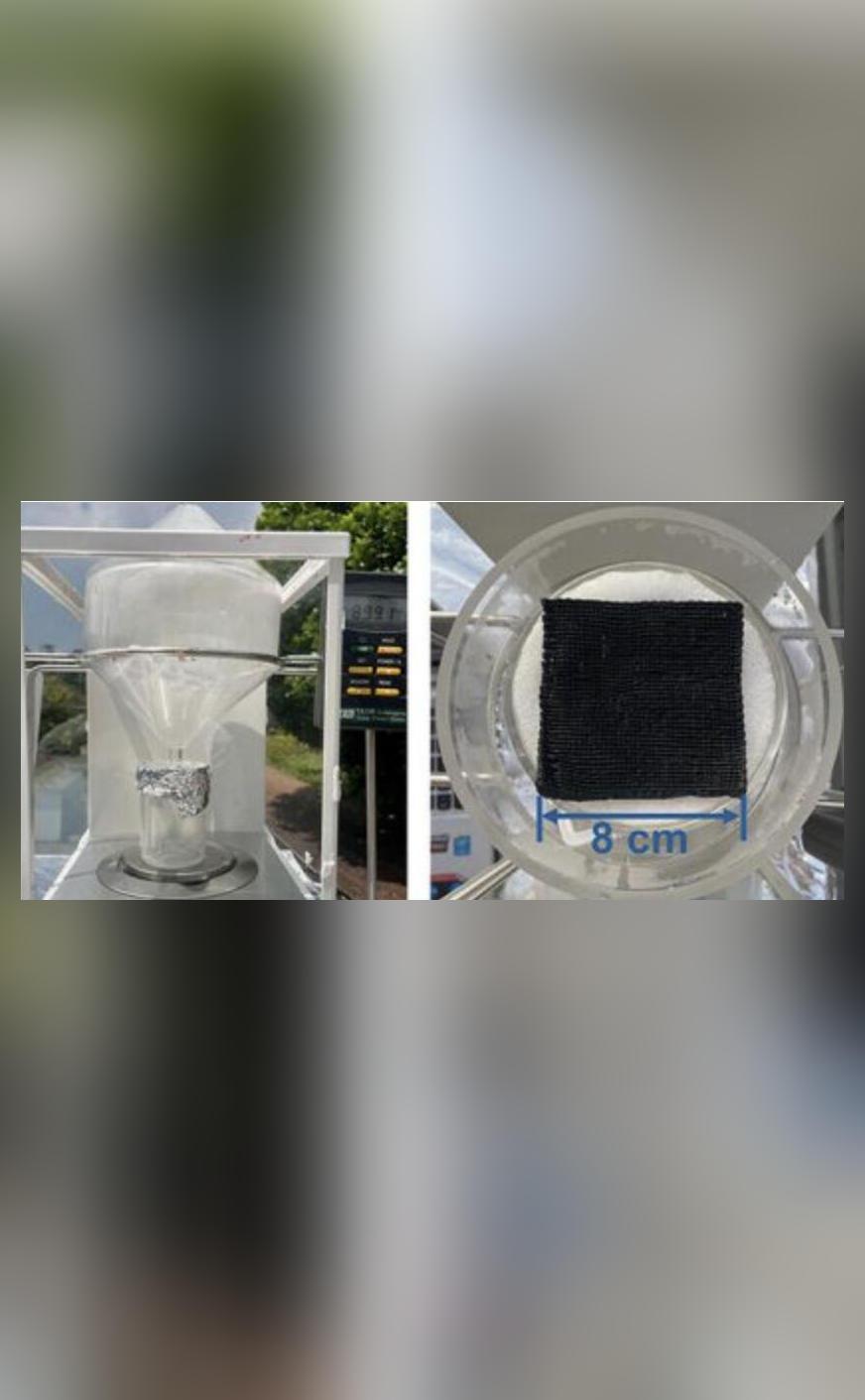
Researchers Create Aerogel that Turns Seawater into Drinking Water
In a breakthrough discovery, scientists have created a revolutionary sponge-like material, known as aerogel, that can convert seawater into freshwater using nothing but sunlight and a plastic cover. This innovative technology has the potential to provide a sustainable solution to the global water crisis, and it’s all thanks to the research published in ACS Energy Letters.
The study, led by researchers at the University of California, Riverside, has created a sponge-like aerogel with microscopic air pockets that can desalinate seawater using solar energy. The process is simple yet effective: when the sponge is placed in a cup containing seawater and covered with a plastic sheet, the sunlight heats it up, causing the water to evaporate. However, the salt and other minerals remain behind, as they don’t evaporate at the same rate as the water.
The vapors that are produced then condense and drip into a container, resulting in clean, fresh drinking water. This technology has the potential to be used in various applications, from providing clean drinking water to communities in need to helping to alleviate the effects of natural disasters.
The researchers behind this breakthrough used a combination of techniques to create the aerogel, including sol-gel processing and freeze-drying. The resulting material has a unique structure that allows it to be highly porous and absorbent, making it ideal for desalination purposes.
“Our aerogel has a high surface area and a hierarchical pore structure, which allows it to efficiently capture and evaporate water from seawater,” said Dr. Yan Liu, the lead author of the study. “This makes it an excellent material for solar-powered desalination.”
The potential applications of this technology are vast. In areas where access to clean drinking water is limited, this technology could provide a reliable source of freshwater. It could also be used to help alleviate the effects of natural disasters, such as hurricanes and earthquakes, which often leave communities without access to clean water.
In addition, this technology could be used to provide clean drinking water to communities in remote or rural areas, where access to clean water is limited. According to the World Health Organization, approximately 844 million people worldwide lack access to clean drinking water, leading to millions of deaths each year.
The use of solar energy to power this technology is also a major advantage. Solar energy is a renewable and sustainable source of power, which means that it won’t contribute to climate change or deplete natural resources. This makes it an ideal solution for communities that may not have access to traditional sources of energy.
While this technology is still in its early stages, the potential for its impact is vast. As researchers continue to refine the material and improve its efficiency, it’s possible that we’ll see widespread adoption of this technology in the future.
The study, published in ACS Energy Letters, provides a detailed look at the creation and testing of the aerogel material. The researchers used a combination of techniques to evaluate the material’s performance, including scanning electron microscopy and thermal gravitational separation.
The study’s findings are promising, with the aerogel material showing a high rate of water evaporation and a low rate of salt rejection. This means that the material is able to effectively capture and evaporate water from seawater, while leaving the salt and other minerals behind.
In conclusion, the creation of an aerogel that can turn seawater into drinking water using sunlight and a plastic cover is a groundbreaking discovery that has the potential to provide a sustainable solution to the global water crisis. As researchers continue to refine this technology, it’s possible that we’ll see widespread adoption of this technology in the future.
Source:
https://pubs.acs.org/doi/10.1021/acsenergylett.5c01233






